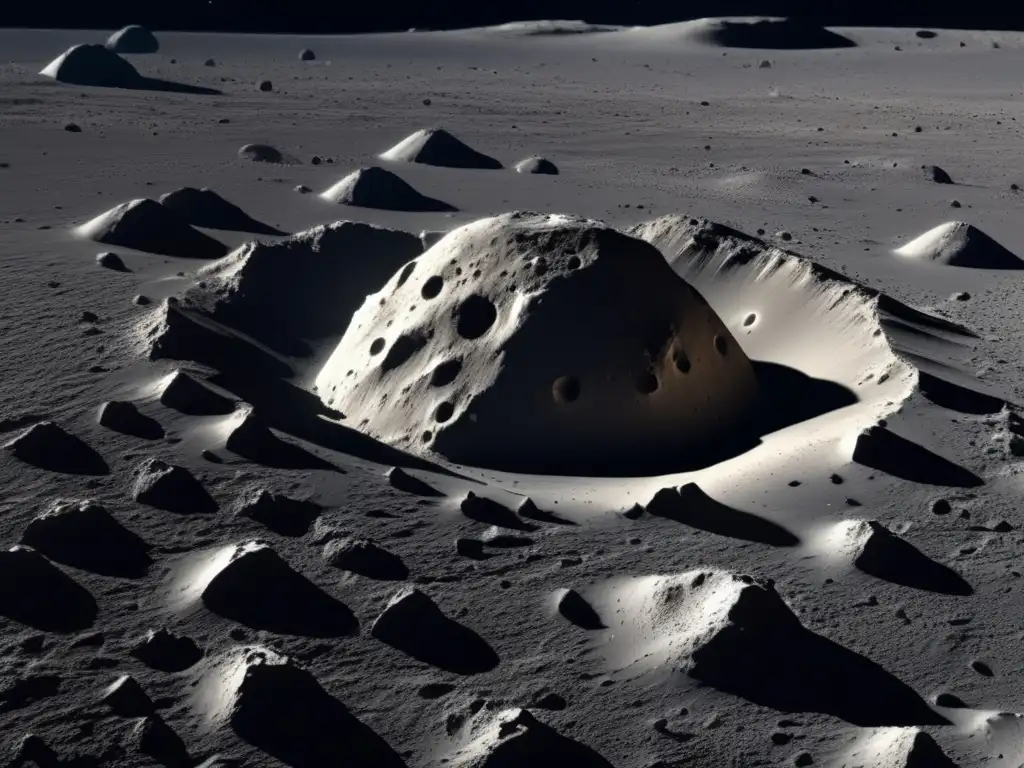Unveiling The Secrets Of Asteroid Pandora

Introduction
Welcome to Asteroid Realm's comprehensive guide to the asteroid Pandora. In this article, we will delve deep into the mythology, history, and cultural significance of this enigmatic celestial object. Prepare to discover the fascinating secrets that Pandora holds within its rocky and mysterious surface.
The Mythical Tale of Pandora

Pandora: The First Woman
In Greek mythology, Pandora was the first mortal woman created by Zeus. According to the myth, she was bestowed with a jar (often mistakenly referred to as a box) containing all the evils of the world. Curiosity got the better of her, and she released these evils upon humanity. However, she managed to close the jar just in time to save Hope from escaping.
Pandora and Epimetheus
Pandora was given as a gift to Epimetheus, brother of Prometheus, despite Prometheus' warning to not accept any gifts from the gods. Pandora brought curiosity and mischief into Epimetheus' life. They eventually had a daughter named Pyrrha, who played an important role in Greek mythology.
Pandora's Box
Although Pandora is often associated with the phrase "Pandora's box," it is important to note that in Greek mythology, she was actually given a jar. The misconception of a box originated from a mistranslation by Renaissance scholars.
Asteroid Pandora: Discovery and Physical Characteristics

Discovery of Asteroid Pandora
Asteroid Pandora was discovered on October 10, 1858, by astronomer George P. Bond at the Harvard College Observatory in Massachusetts, USA. It was named after the mythological figure Pandora due to its intriguing nature.
Physical Characteristics of Asteroid Pandora
Asteroid Pandora belongs to the main asteroid belt, situated between Mars and Jupiter. It has an estimated diameter of approximately 108 kilometers and orbits the Sun at a mean distance of 2.75 astronomical units (AU). Its composition is believed to be primarily rocky and metallic, typical of many asteroids in the asteroid belt.
The Cultural Significance of Asteroid Pandora

Pandora's Influence in Literature and Art
The story of Pandora has captured the imagination of artists and writers throughout history. From ancient Greek pottery to Renaissance paintings and modern literature, Pandora's tale has been a recurring theme, symbolizing curiosity, temptation, and the consequences of humanity's actions.
Asteroid Pandora in Astrology
In astrology, asteroids play a significant role in chart interpretation. Asteroid Pandora is associated with themes of curiosity, hidden secrets, and the unleashing of unforeseen consequences. Its placement in an individual's birth chart can provide insights into their relationship with curiosity and the potential consequences of their actions.
Frequently Asked Questions

-
What is the significance of Pandora's box in Greek mythology?
Pandora's box is actually a jar in Greek mythology. It contained all the evils of the world, which were released by Pandora except for hope. Hence, it symbolizes the unleashing of negative forces upon humanity.
-
Who discovered asteroid Pandora?
Asteroid Pandora was discovered by astronomer George P. Bond on October 10, 1858, at the Harvard College Observatory.
-
What is the size of asteroid Pandora?
Asteroid Pandora has an estimated diameter of approximately 108 kilometers.
-
What is the composition of asteroid Pandora?
Asteroid Pandora is believed to be primarily composed of rocky and metallic materials, similar to many other asteroids in the main asteroid belt.
-
What is the cultural significance of asteroid Pandora?
Asteroid Pandora's cultural significance lies in its association with the mythological figure Pandora and the recurring themes of curiosity, temptation, and the consequences of actions in literature, art, and astrology.
Conclusion
Asteroid Pandora continues to pique our curiosity with its rich mythology, historical significance, and intriguing physical characteristics. Exploring its story and cultural impact allows us to better understand the complex relationship between humans and the universe. Let us continue to unravel the mysteries of asteroids, forging a deeper connection with the celestial wonders that surround us.
We encourage you to share your thoughts and insights in the comments section below. Don't forget to engage with www.asteroidrealm.com by subscribing, sharing this article on social networks, or participating in discussions. Thank you for taking the time to explore the captivating world of asteroids with us.
Additional Resources

For further exploration of asteroids and related topics, check out these additional resources:
 A Journey Into The History Of Asteroid Albion
A Journey Into The History Of Asteroid Albion The Enigma Surrounding Asteroid Angelina
The Enigma Surrounding Asteroid Angelina Exploring The Mysterious Asteroid Chiron
Exploring The Mysterious Asteroid ChironIf you want to discover more articles similar to Unveiling The Secrets Of Asteroid Pandora, you can visit the Asteroid Profiles category.
Leave a Reply

Articulos relacionados: